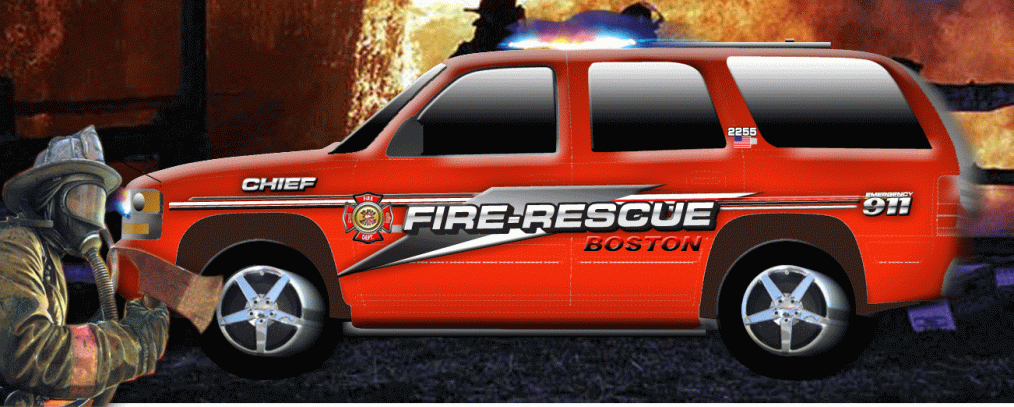 I love writing on here because I can be honest. And since I don’t write for a published magazine I don’t have to be PC. Those of you who know me, know I am a “no nonsense – call it like I see” it type of person.
I love writing on here because I can be honest. And since I don’t write for a published magazine I don’t have to be PC. Those of you who know me, know I am a “no nonsense – call it like I see” it type of person.
Being an incident commander takes an experienced, level headed thinker; someone who can stay ahead of the incident curve, someone who has a complete grasp of what is occurring, about to occur and may occur. The Incident Commander (IC) shouldn’t be too proud to develop plan B or even C, step back and look at the big picture. He or She should be able to effectively manage a scene through not only observations from the ICP (Incident Command Post) but also through reports from his/her resource leaders. Taking command of scene operations and effectively managing resources takes more than the ability to click on the green strobe and use fancy terms such as sector or division. Do you truly know what you are doing and why you are in Command? Should you be in Command? Captains and Lieutenants, when placed in this role will you have all the tools in your tool box to effectively operate?
I’d like to touch on a few things I have seen over the years in different parts of the country during my brief career. This isn’t meant to criticize any group but rather to help correct some errors I see taking place and to help the next generation assume these roles without learning from poor examples.
1. If your department just recently (last 10 years) adopted a more formal Fire Ground Command system (FGC) after the 2004 Presidential Directive than there may be a few in your department that think you are on the cutting edge and setting a trend. Don’t be fooled, the ICS model has been around for more than 30 years and been being effectively used in its present form for over 20. For more information on this Google “FIRESCOPE” and “Why was ICS developed”
2. Be an effective communicator. If you can’t talk on the radio, maybe its time you gave it up or sought some training. Nothing like instilling faith in your guys by having them hear the IC stutter and stammer for words and forget what a skylight is called. Develop a professional radio voice and manner of speaking. This not only sounds cleaner and more professional, but communicates more effectively. We have all been on the scene where radio traffic is overwhelming and air time is at a prime. If you can say it in 5 words, dont use 50. Remember the duck- calm on the surface and paddling like hell below. And yes, this takes training and practice.
3. Know your recourses. Know what will be or what is coming to your alarm. Know what they carry, their staffing and what they are good at. Your $70,000 Tahoe with its LED’s, Laptops and Phone’s wont put out the fire or mitigate the incident.
4. Know the incident. If you are looking through the windshield and at anytime you don’t know what your looking at, call for help. There is no shame in calling for resources or even another IC who has more experience, but there is shame if a lack of foresight has put any brothers or sisters in danger. At any point I should be able to open that passenger door of your command vehicle sit with you and ask you 3 simple questions: What do expect in 10 min, what will your actions be by then (actions of crews) and what if that benchmark isn’t reached? (Plan B) If it doesn’t go your way are you going to just throw resources at it? Or reevaluate and asses current strategy and tactics. I like the old military term: FART. Fall back and reassess tactics.
5. Use effective division of labor. The whole idea behind this thing is to create a chain of command and unity of command, so set up your incidents so that everyone reports to a supervisor. If you have interior operations taking place, set up an interior division. Let me touch on this a bit, as I see this as one not used enough. I am not a big fan of divisions on the exterior of the structure. Yes they can see smoke, but what about interior conditions? The best resource for this is someone inside – hence: Interior Division. Charlie side is great for Safety and perhaps if you have an exposure or potential for extension I can see a division, however to be communicating with this guy (or gal) about interior conditions and making decisions based of his information alone isn’t correct. This is a great source for keeping an eye on smoke, don’t get me wrong. But do they know how to read it?
Ok, back to Interior Division- This generally would be your second due captain through the door. Reason for this is, your first due captain is probably working. He or she doesn’t have time to deal with managing resources. In addition to that, in ICS, additional structure is only added when needed. So if you are managing one resource there is no reason for additional structure; now you send 2 companies in plus 2 from your first due Ladder for search, now you have the need for that line of communication inside.
This is huge and I can’t stress it enough. If you don’t do this on the simplest of incidents, you won’t on the larger or your small incident will get large and you will already be behind.
6. Listen to your guys. Yes you are the Chief, everyone knows it. They can see your brilliant white shirt from across the incident, you have nothing to prove. Yes, you have the final say. But you also have experienced guys inside or on the Charlie side. Listen to them and use them. If you are on a HazMat scene and you’re a Chief who only has awareness level and your Captain is a tech- Guess who knows more! That’s not to challenge you as a commanding officer or a leader; but if you choose to ignore those resources, you better believe they will begin to doubt and challenge you.
7.. Understand tactics and strategies. Keep up with the latest strategies and tactics used by resources. Not just the ones defined in your SOG’s but alternative ones as well. If a company told you they were on scene with a confirmed rescue and were going to VES on the Charlie / Delta corner, would you know what that was?
8. Don’t fall into the trap of following a script. Many departments in an effort to work well together in a boundary drop or automatic aid agreement have developed SOG’s dealing with operations. These are extremely helpful but can also be a trap and make the IC lazy and unable to deviate when needed.
9. Continue to learn and develop yourself as an IC. I am trying really hard to stay away from leadership in this article and focus on operations; but the 2 are so close at times. A good leader will have trust of his crew on and off scene. A good and effective leader will know there is always room for improvement and will seek to better at his/her job. Learning, studying, reading magazines, networking and lastly implementing changes on the scene or training ground. If you don’t believe me with regard to interior division, try it on your next job. You may be retiring soon and feel like “you cant teach old dogs new tricks” but you obviously feel its important enough to still come to work; why not continue to develop yourself into a better IC and Chief for your guys. You never know who you could teach or influence and even more importantly, learn from.









